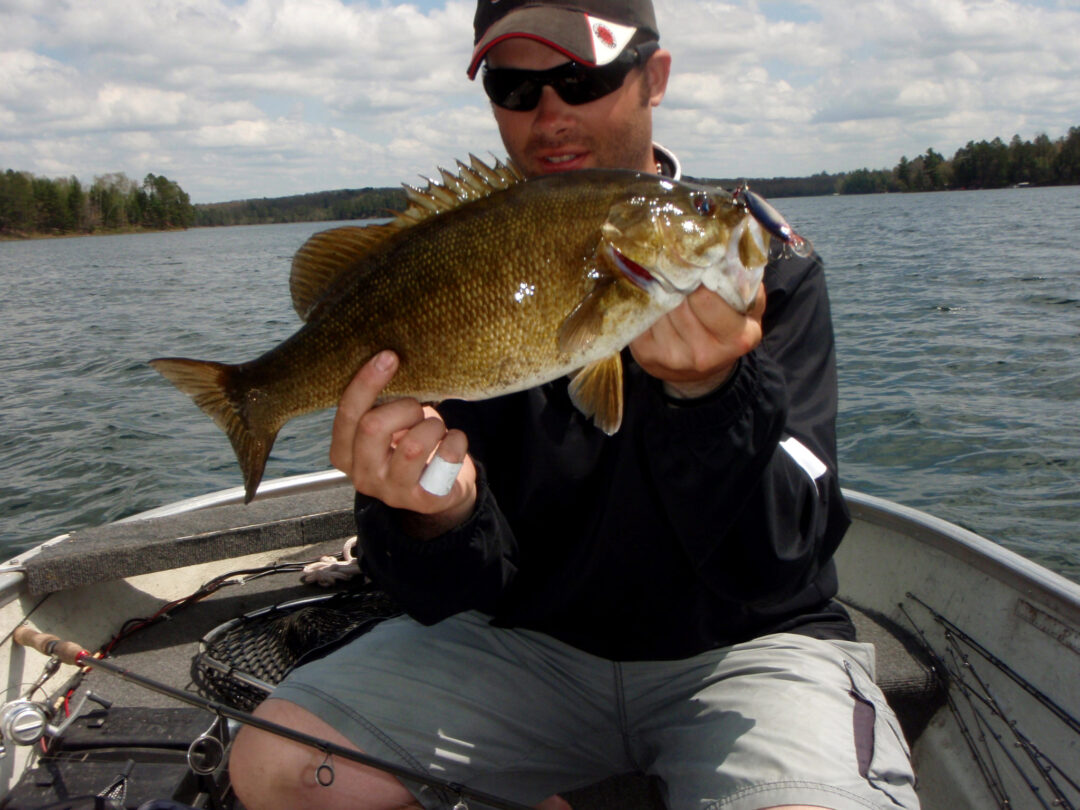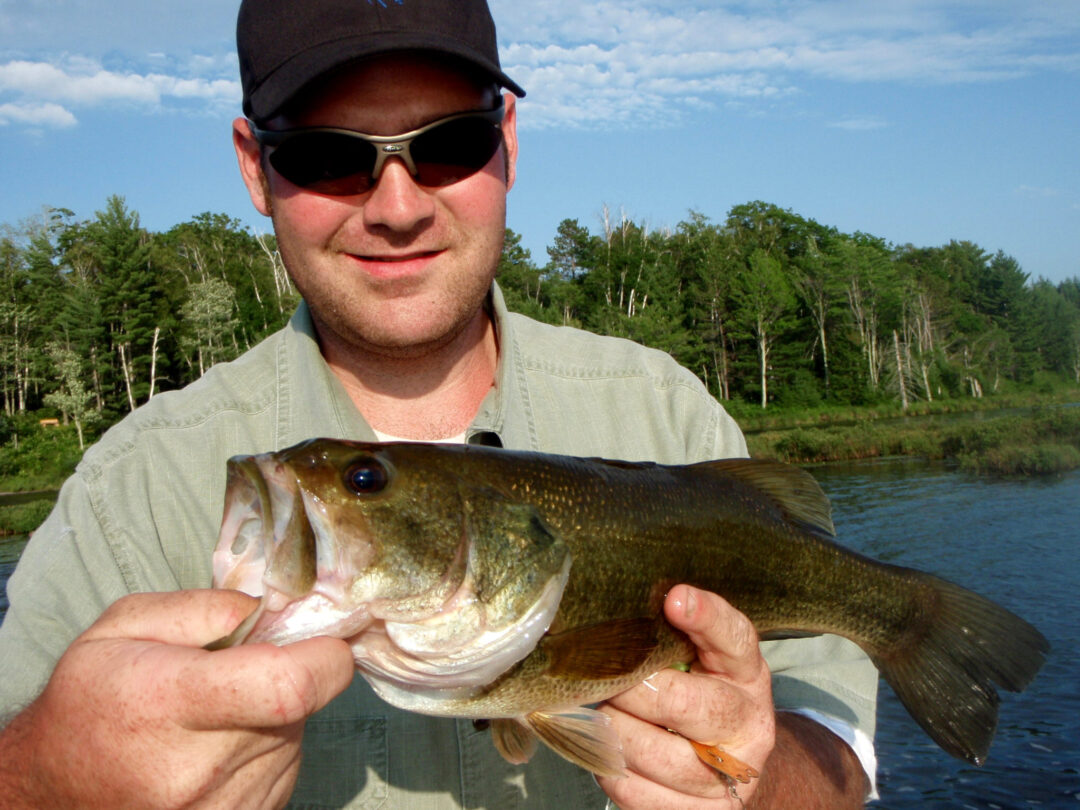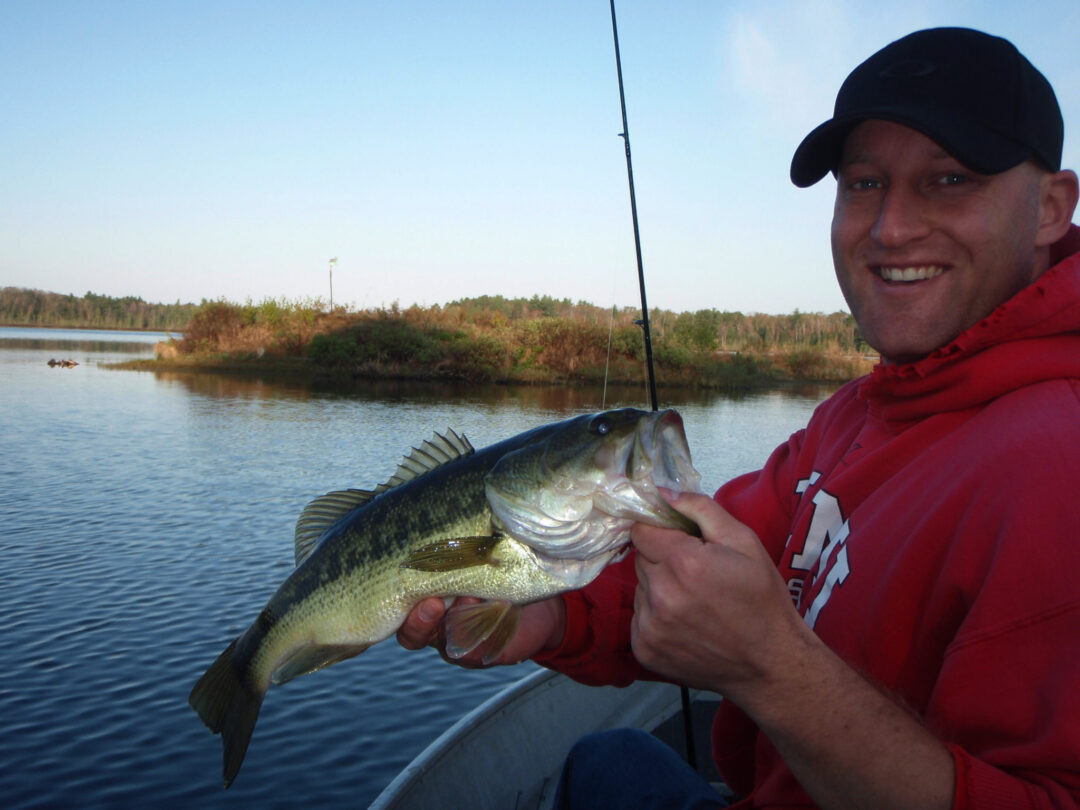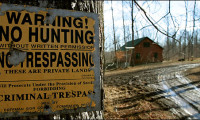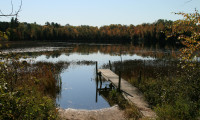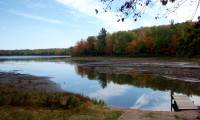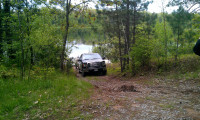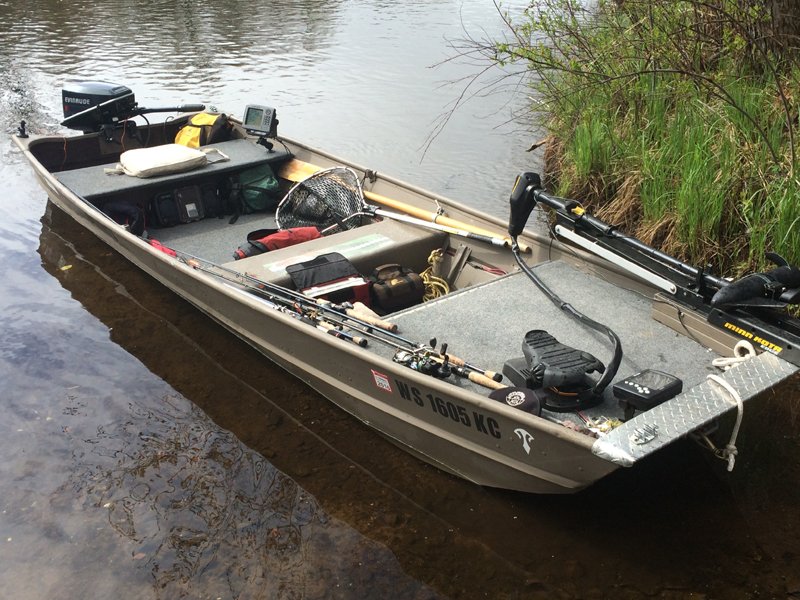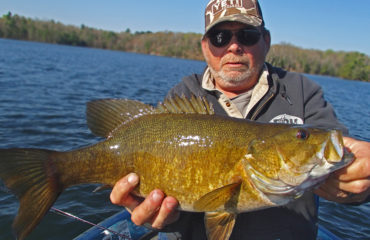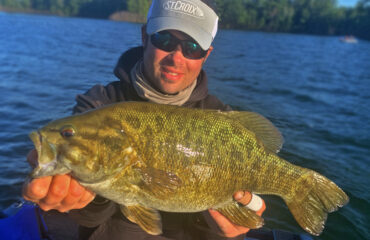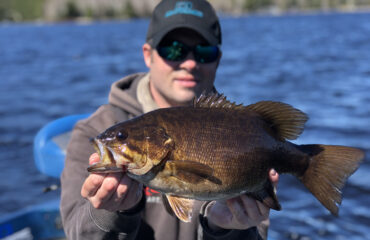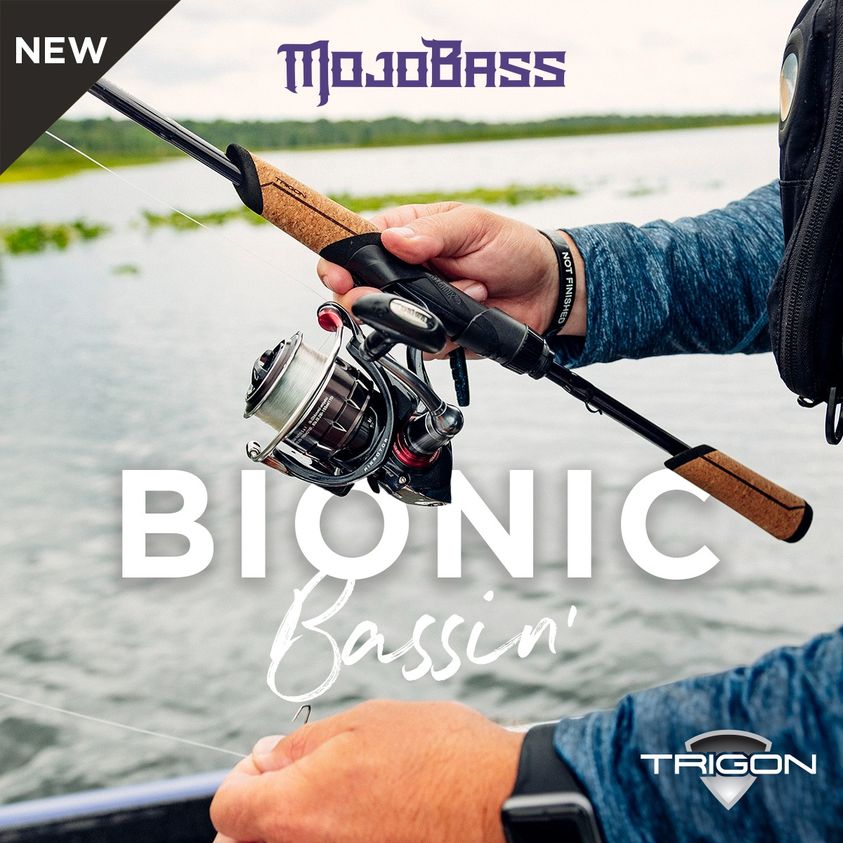Fishing Wilderness Lakes
By Andrew Ragas
Thousands of years ago, following the melt of the ice age, specific regions of North America and its landscape were littered by the abundant remnants of glaciers in the form of wilderness lakes. Scattered, yet heavily concentrated, throughout the lakeland regions of Minnesota, Wisconsin, Michigan, The Dakotas, and several areas of Canada, these small bodies of water are overlooked and little known to the masses of anglers. Because of their difficulty of access and little-known unpressured fisheries, they are filled with multi-species delight.
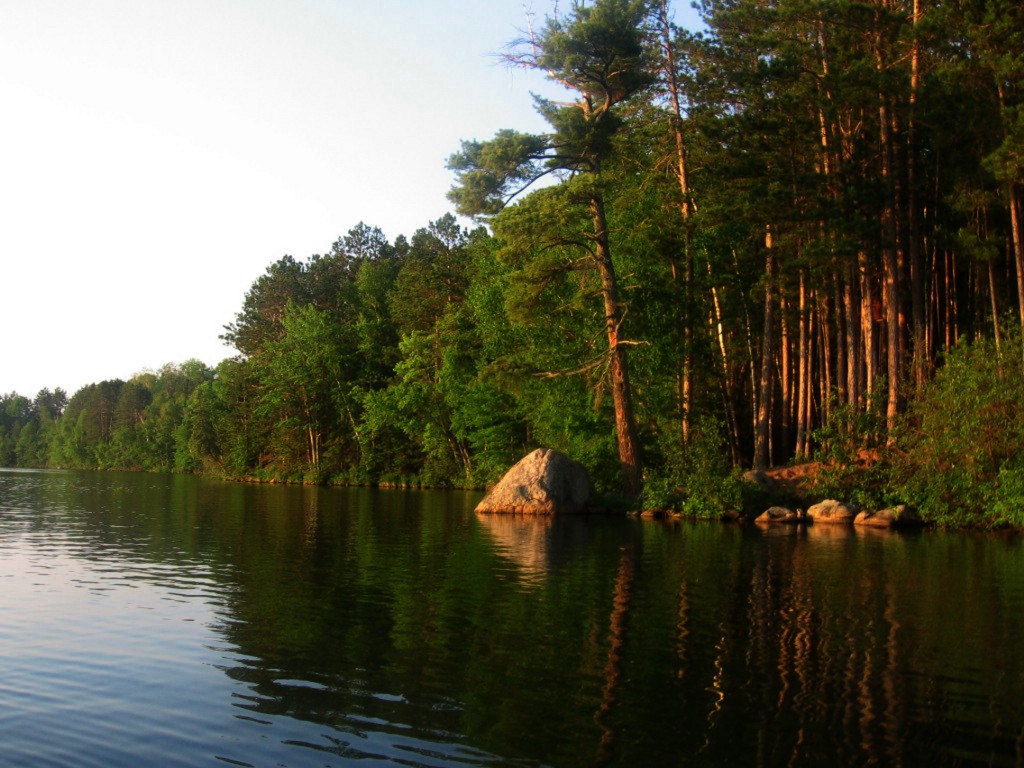
Having spent every year of my life fishing throughout the north, wilderness lakes (backwoods lakes) are no secret to my family and me. I acquired my fishing skills on them at a young age, and have caught some of my largest and most memorable fish from them. Due to their location on the map, they contain some of the finest freshwater fishing that anyone can ever experience.
Backwoods Locations
If you study Google maps or any gazetteer, look closely, as these lakes are more abundant than anyone thinks. In Illinois, you will find wilderness lakes scattered throughout the Shawnee National Forest in Southern Illinois. Never fished them before, but others have and many believe the next Illinois state record largemouth bass lives there.
Northward in Wisconsin, two specific regions offering outstanding fishing opportunities come to mind. The first is where I live for half the year in the Oneida, Vilas, and Iron County region. Among those 3,200 listed lakes, approximately 50% of them can be classified as wilderness lakes. As for the second region, travel westward across the state down Highway 70 to Sawyer and Rusk Counties and you will find a bunch more around Hayward, Spooner, and Minong.
West of Wisconsin is Minnesota’s “Land of Ten Thousand Lakes” and the Dakotas. Minnesota is loaded with lakes throughout the state with many wilderness lakes around the Brainerd, Alexandria, Detroit Lakes, Grand Rapids, Bemidji, and the Boundary Waters; all of which are popular angling regions for locals and out of state travelers. West of Minnesota is North and South Dakota. Due to its prairies and farmland most anglers wouldn’t associate either of these states to having any fishing opportunities. But looking closely at South Dakota, you will see an unbelievable cluster of lakes in the Northeastern part of the state near the towns of Watertown, Webster, and Roy Lake State Park. Further north in North Dakota, the Devils Lake region has lots of places too.
Let’s not forget about Michigan either. Wilderness lakes are prevalent throughout Upper and Lower Michigan. The “yoopers” have a fantastic selection of lakes located throughout Gogebic County and the Ottawa National Forest. Meanwhile down south in the mitten, anglers have wilderness opportunities south of Traverse City and throughout the Manistee and Huron National Forests.
Lastly, look at Canada and all of its drive-to and fly-in opportunities. Most lakes in Canada don’t even have access or any roads in order to reach them. These are the lakes that never get fished.
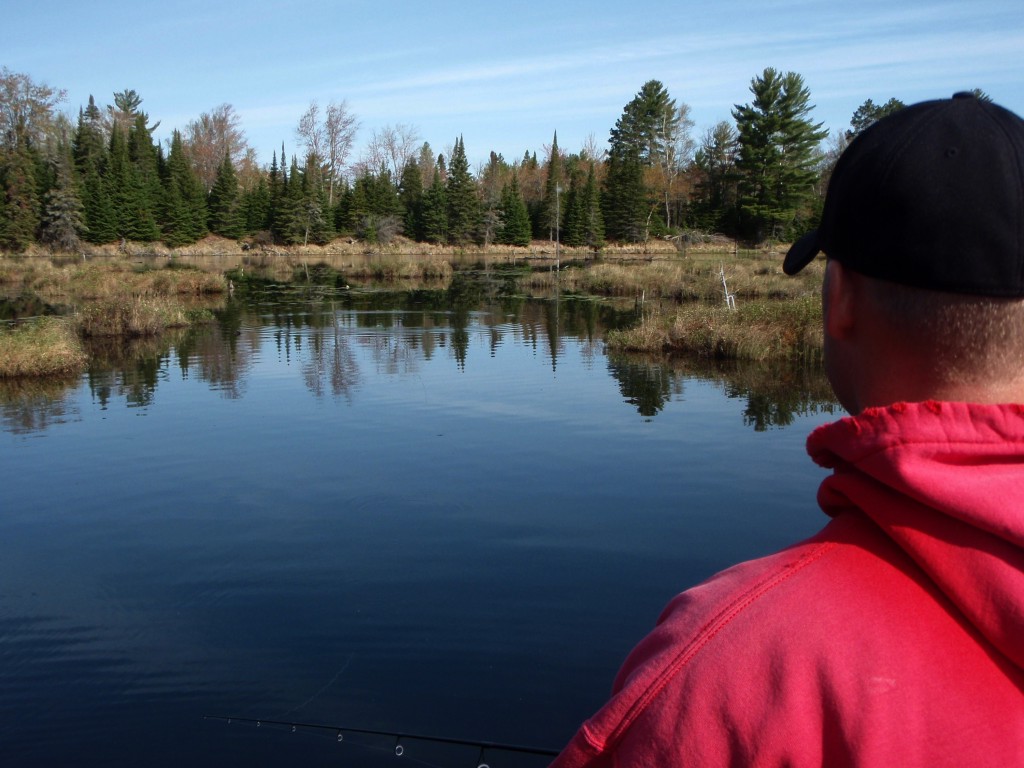
Backwoods Lakes Defined
You may be wondering what constitutes a wilderness lake. Most of these lakes range in size from 20 to over 200 acres in size. In Canada, these lakes may be larger than 1,000 acres. For those of you residing in the rural parts of the country, these lakes are not to be confused with puddles such as ponds or farm ponds that are located in subdivisions and on private farmland.
Some wilderness lakes are large enough to allow boat access thanks to poorly developed boat launches or roadside access. Most offer little to virtually zero fishing pressure. These lakes may contain a few residents, private land owners, and houses along their shorelines. But for the most part they are generally undeveloped and surrounded by forests with fully natural and undisturbed, pristine shorelines. Most of the time, they are difficult to access which is a turn-off to anglers. However, if access is available and if motivated to get there, they require lots of energy and effort in order to reach through the avenues of some off-roading and portaging. These factors are the reasons why wilderness lakes contain such good fishing for action, numbers, and big fish.
Due to their poor public access, wilderness lakes remain generally untouched by our state agencies and Natural Resources crews. For this reason, most of these gems contain natural, self-sustaining populations of gamefish. They also probably have never been scanned by sonar, nor do they have available maps, and they certainly aren’t shown in detail on our boat’s GPS systems. However, for the lakes containing adequate boat launches or the occasional private resorts that are visited by tourists and traveling anglers, these places may be stocked with certain gamefish species on an alternate-year basis in order to sustain their fisheries. Due to state management, their fishery histories are publicly known.
Whether or not wilderness lakes are managed by our state agencies, they all deserve care and strict regulations. Because most are unmanaged and lack public access, resource management is an important issue. Catch and release on large adult fish – the spawners – is critical to population sustenance and the future of the fishery. Anglers may definitely take enough for a fish fry or a shore lunch, but should certainly never overfish these little gems. Also, a courtesy rule is to never publicize these types of lakes as most folks and especially fishing guides and outfitters tend to keep these lakes to themselves as their own little secrets.
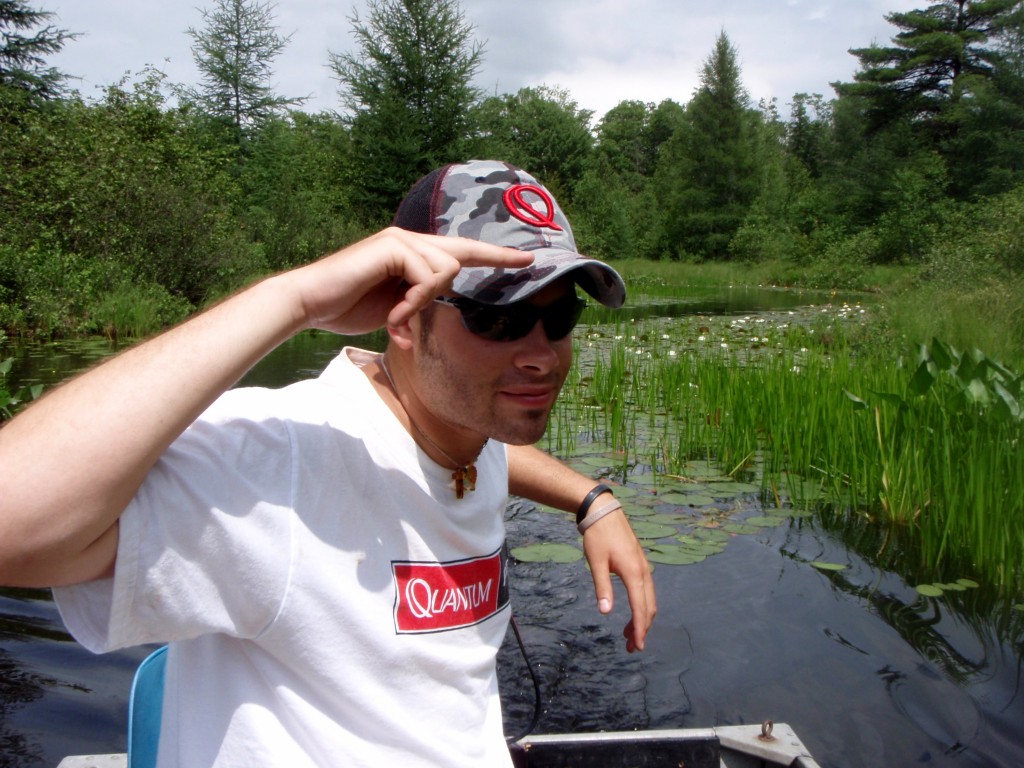
Lake Types and Fish Species
Freshwater lakes are generally classified by type for determining age and the specific fisheries they contain, and all other limnology studies. The three lake types are oligotrophic, mesotrophic and eutrophic. The wilderness lakes I fish are available in each of these three types, and all are comprised of very different fisheries.
Oligotrophic lakes are commonly found throughout Northern Wisconsin, Minnesota’s Boundary Waters, and all over Canada. These lakes are mostly infertile, usually deep and expansive with open water, have extreme clarity, and are sand and rock based possessing little to no shallow water vegetation. In their furthest northern locations, their cold, deep infertile waters are best suited to lake trout, northern pike, walleyes, brook trout and grayling. However, most of the. lakes where I fish are warmer and shallower, and tend to feature a biomass dominated by slow growing smallmouth or largemouth bass. This is fairly common in Wisconsin, Minnesota and Michigan’s U.P.
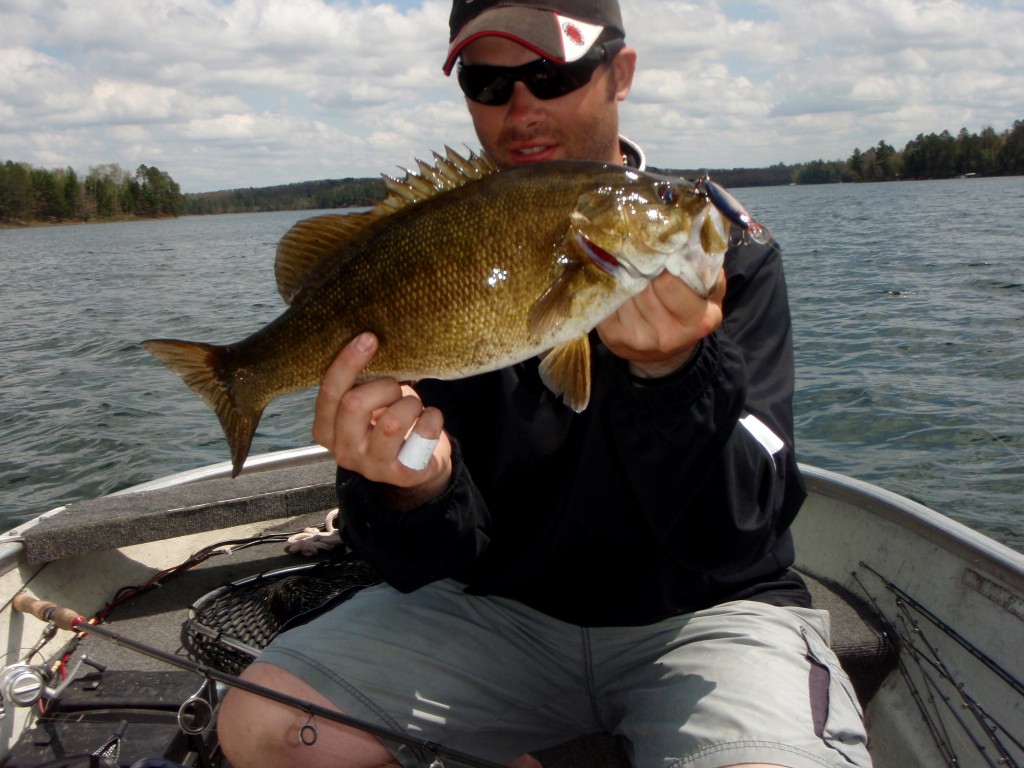
Besides bass with slow growth rates as the primary dominant gamefish species, these lakes may contain some walleyes (some natural, some stocked), possibly rainbow or brown trout (some natural, some stocked), lots of stunted panfish such as perch and bluegills, and small fishable populations of self-sustaining or stocked northern pike, or muskies.
In the small oligotrophic lakes I fish, most gamefish species are stunted in size and possess slow growth rates due to the lake’s infertility and lack of good forage structure. Despite these limitations, these lakes contain some trophy potential for all species when anglers adhere to catch and release.
The second lake type, which is the most common of all wilderness lakes, is mesotrophic. These moderately fertile lakes with some depth rank among the top producers of all gamefish species. The best mesotrophic lakes have clean, well-structured bottoms; enough sand, gravel and rock to allow for successful natural reproduction for all species. They also contain plenty of areas with shallow vegetation and quiet bays with weed growth to rear young-of-year fish and forage species. Mesotrophic lakes possess diverse fisheries as they’re able to support a few dominant primary gamefish species and populations of secondary species as well.
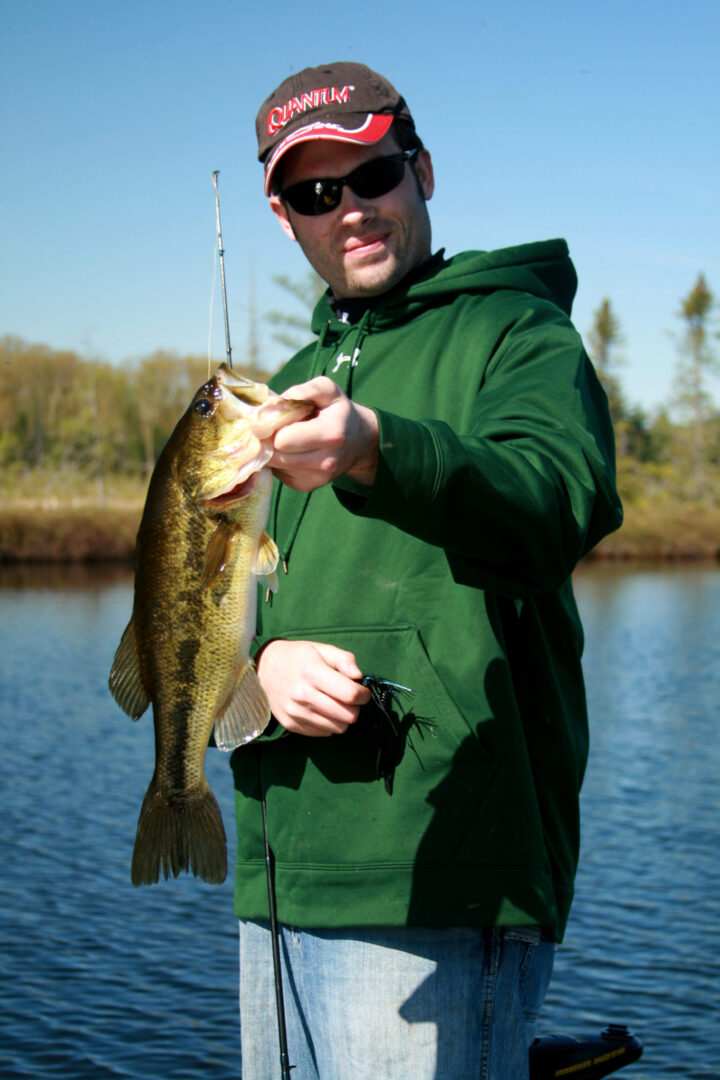 Depending upon region and latitude, mesotrophic wilderness lakes generally contain diverse fisheries. Most of these lakes I fish tend to be dominated by healthy populations of largemouth or smallmouth bass and panfish. Some others I’ve fished are surprisingly good walleye factories. Also, some secret gems are even populated primarily by muskies or northern pike of both action size and trophies. The most common trait of all mesotrophic wilderness lakes is they support a variety of gamefish species; all of which can reach trophy potential and generally don’t require stocking unless there is a presence of a good public boat landing or resorts.
Depending upon region and latitude, mesotrophic wilderness lakes generally contain diverse fisheries. Most of these lakes I fish tend to be dominated by healthy populations of largemouth or smallmouth bass and panfish. Some others I’ve fished are surprisingly good walleye factories. Also, some secret gems are even populated primarily by muskies or northern pike of both action size and trophies. The most common trait of all mesotrophic wilderness lakes is they support a variety of gamefish species; all of which can reach trophy potential and generally don’t require stocking unless there is a presence of a good public boat landing or resorts.
The third lake type is eutrophic. Eutrophic lakes are exceptionally fertile, shallow, warm and heavily vegetated. Seldom deeper than 10 to 15 feet, they are bowl shaped and often lack well defined structure. They tend to have silty muddy bottoms, and may feature bog shorelines and tannic stained water. Eutrophic lakes are best suited to largemouth bass, often fish of trophy size. Besides largemouths, they commonly contain panfish, a few pike, and the occasional rough fish that includes bowfin and bullheads.
Eutrophic wilderness lakes are most prevalent in the southern ranges of the “wilderness belt” as well as in regions with marshy lowlands, bogs, and swamps. These lakes aren’t as common as mesotrophic lakes, but their fishing can be just as good, if not better, for largemouth bass and other warm water species due to fast growth rates and trophy potential.
Lake Access
Difficult access is the main reason why wilderness lakes barely receive any fishing pressure. Despite access limitations, there’s always a way to reach these lakes whether it’s through public or private lands.
The internet and gazetteer are my best sources for finding these hidden gems. Through research I mark my traveling routes, locate boat landings, and possibly determine the fisheries of nearly every lake through online research. When researching these lakes and determining their accessibility, it’s important to scout them beforehand. Locate their access sites first and observe their boat landings or dump-in areas to determine whether or not they’re usable for boat. When visiting these places for the first time, leave the boat at home as you never want to get stuck with it or be on a dirt logging road that doesn’t offer a turn-around site.
Public land access off state owned land through a boat landing, dump-in, and roadside access is most often used. Nearly all of these access sites will be poorly marked and undeveloped, making them best suited for trucks and 4×4 vehicles for launching. Because these lakes have a better chance of allowing boat access, they tend to get fished most often because they’re less difficult to access.
Besides public lands, anglers can get to wilderness lakes through private lands, but with greater difficulty. It pays to make friends with private homeowners or landowners for direct access from their property. You are more apt to get permission if you present yourself well. Don’t be a slob. Clean up after yourself by packing out whatever trash you generate. It will also help you for future trips if you pick up any trash left behind by previous visitors. Meanwhile on larger lakes with resorts or campsites, access can be had by a for-fee boat launch or boat rental, which is fairly common with resorts. Many larger wilderness lakes in Wisconsin and Minnesota have resorts on them that give its customers access and may allow outsiders access to their excellent, exclusively private fishing.
Watercraft
Wilderness lakes often require the use of lighter, smaller boats due to shallow unimproved landings and roadside access. My personal preference is to fish out of the comforts of my 16 foot fiberglass Lund where launches are deeper and outboards are allowed. We use trucks and 4×4 vehicles to launch my boat. Other than carelessly towing with my front wheel drive vehicle we’ve rarely experienced any problems or gotten stuck. My boat is light enough, under 1,200 pounds fully rigged, that it can be launched from most boat landings and any types of surfaces. It is also shallow enough that it can float in less than a foot of water and get through anywhere.
When my primary boat isn’t an option I make use of my aluminum boats. This usually occurs when the access site is too shallow, roadside dump-in is the only option, or if there is an outboard ordinance or electric-only rule. For the much unimproved access sites, I use my 12 foot semi-v or newly rebuilt 14 foot Lund jon boat. These lightweight, durable, comfortable, reliable tin boats allow for easy portaging and carry-in access amongst two people. Both can be equipped with a small outboard, trolling motor and basic fish locators which aren’t overkill for successful effective fishing on these types of lakes.
Meanwhile, for anglers without modernized fishing boats, wilderness lakes are accessed easiest by canoe, kayak, and pram. These boats fish without any limits. They can get anglers farther and deeper into the woods than any aluminum or fiberglass fishing boat ever will.
Once the challenging access hurdles are cleared and you finally make your way onto the water, keep the rods and reels and tackle to a limited, simplified selection. Because this may likely be your first time fishing a newly-discovered lake, you might not have the spaciousness or luxury of fishing from of a modern boat with storage space. It’s best to be simple and fish with gear that can be used for multiple techniques and allows you to enjoy the possibility of a multi-species outing.
For these trips, I tend to fish with a spinning rod or two, and a baitcasting rod or two. I bring a small tackle bag with a selection of search lures (crankbaits, spinnerbaits and topwaters) along with an assortment of jigs, soft plastics, and possibly live bait for special situations. If I have previous experience fishing a particular wilderness lake, then I may go more in-depth by fishing with technique-specific rods and reels towards a particular targeted species.
Backwoods Benefits
In an angling era where most popular waterways throughout the country are being pounded and pressured by the masses of anglers, consider traveling to the wilderness belt of North America to alleviate you from having to deal with conditioned fish. Enjoy the angling experience on wilderness lakes and the hidden gems that are filled with undiscovered and unexploited fisheries.
Until I explored my way to lightly fished wilderness lakes and discovered their pristine resources and undisturbed fish populations, I never imagined that fishing would require so much strategy and physical work. Most anglers I come across today are simply too lazy to go through the challenges and adventures of accessing these places. Likewise, many anglers lack the necessary knowledge and resources to be able to fish them. This is ultimately a benefit for anglers like me who are willing to travel the extra mile down the dirt road to get into the water. Once I get my boat in there, chances are I will be the only person out there fishing. Every fisherman has his or her favorite secret spot. By fishing the little known wilderness lakes, your favorite spot has a better chance of really staying secret.


